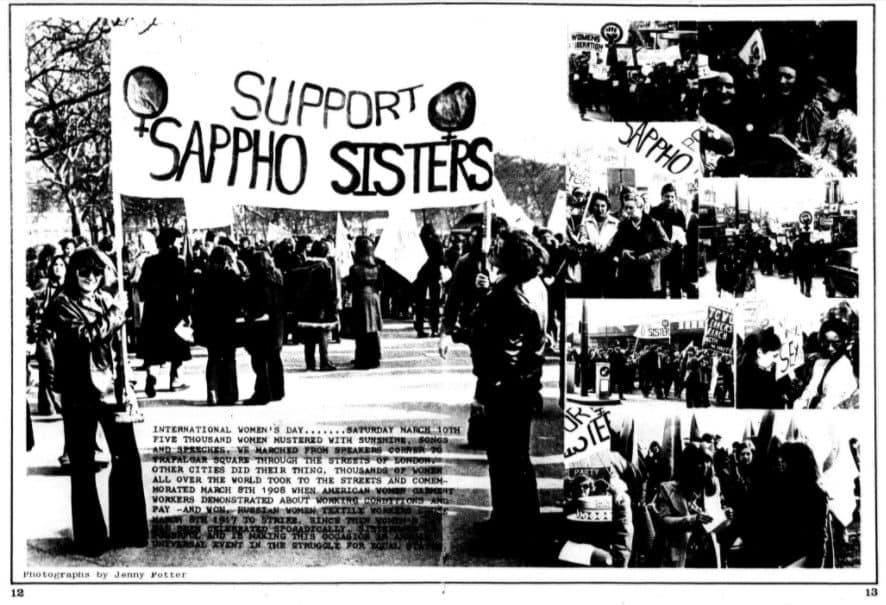By Rachel Holt, Acquisitions Editor for Gale International
Happy International Women’s Day (#BalanceforBetter) and may your Women’s History Month 2019 be an enlightening one!
Every year March marks the month where several countries around the world celebrate female contributions to society by recognising their achievements throughout history. However, the origins of how both these events came into being are themselves fascinating episodes in feminist history. If “history is written by the victors” then who decides which people and events from the past deserves our attention?[1]
The first ever official International Women’s Day occurred earlier than you may think: 19th March 1911. The Socialist Party of America held a precursory ‘Women’s Day’ in New York on 28th February 1909 and evidently this was considered so successful that the 1910 International Socialist Woman’s Conference fought to make it an annual event. The following year conference delegates from over seventeen countries marked the first official International Women’s Day as a deliberate strategy to promote equal rights.
By using primary sources to trace International Women’s Day we can see that initial coverage began only in publications primarily concerned with the fight for women’s suffrage such as the Woman’s Leader and The Common Cause and The League Leaflet, both of which can be found in Nineteenth Century Collections Online.

Right: MacPherson, Mary. “International Notes.” The League Leaflet, no. 19, 1912, p. 4. Women’s Studies Archive, http://tinyurl.galegroup.com/tinyurl/9LGEf9.
In later years however, mainstream periodicals would also start reporting on International Women’s Day celebrations around the globe including The Daily Telegraph, The Daily Mail and The New York Herald Tribune (later The International Herald Tribune).

Right: “Picture Gallery.” Daily Mail, 28 May 1927, p. 5. Daily Mail Historical Archive, 1896-2004, http://tinyurl.galegroup.com/tinyurl/9LGPA6.
!["Woman, 28, Heads Soviet International Air Board." New York Herald Tribune [European Edition], 21 Mar. 1939, p. 2. International Herald Tribune Historical Archive 1887-2013, http://tinyurl.galegroup.com/tinyurl/9LGTV9.](http://blog.gale.cengage.co.uk/wp-content/uploads/2019/03/5_Five.jpg)
Over the next few decades reference to International Women’s Day was somewhat sporadic but there was a significant upsurge in the 1970’s, probably due to the rise in women’s liberation campaigns as well the increase of feminist and gay magazines such as Pandora (USA), Velvet Fist (Canada), Gay News (UK) and Mejane (Australia) to name a few.

Right: “Velvet Fist.” Velvet Fist, 1972, p. [1]. Women’s Studies Archive, http://tinyurl.galegroup.com/tinyurl/9HmLQ5.

Right: “Mejane.” Mejane, Apr. 1974. Women’s Studies Archive, http://tinyurl.galegroup.com/tinyurl/9HkfD6.
Fast forward to 1985 when the National Women’s History Project (later renamed the National Women’s History Alliance) started to fight to grow the idea of International Women’s Day into something more, and in 1987 they successfully lobbied Congress to recognise March as Women’s History Month in the USA. The year the National Women’s History Project sets a different theme and provides resources and materials for education and celebration of it. The National Women’s History Theme for 2019 is ‘Visionary Women: Champions of Peace & Nonviolence’ but has ranged across a variety of topics from fighting discrimination, female trailblazers in business, to women in public service and government. Although originally a US initiative, since the early 1990’s Women’s History Month has been officially celebrated in Canada, Australia and the UK, as well as elsewhere around the globe.
The National Women’s History Alliance is committed to the goals of education, empowerment, equality, and inclusion by promoting women’s history. Gale had the great honour to work with the National Women’s History Project to digitise several of its collections for the Women’s Studies Archive including,
- Herstory
The Herstory Collection comprises full texts of journals, newspapers, and newsletters tracing the evolution of women’s rights movements in the United States and abroad from 1956 to 1974.

- Women and Health/Mental Health
The Women and Health/Mental Health collection features pamphlets, speeches, newsletters, reports, memos, conference papers, mainstream and alternative newspaper stories, and academic journal articles.

- Women and Law Collection
The collection covers six broad topics within the framework of women and law, including general information on women’s legal issues, politics, employment, special films on rape, prison and prostitution, and issues specific to black and minority women.

Marches, Women’s (F1078). December 13, 1970-February 10, 1973. MS Women and Law: Section I: Law/General. The National Women’s History Project. Women’s Studies Archive, http://tinyurl.galegroup.com/tinyurl/9Ho448.
Celebrating International Women’s Day and Women’s History Month are perfect examples of how studying our history can improve society’s future. By demonstrating to girls what the women before them have achieved we are encouraging them to work harder, aim higher and to not give up at the first hurdle.
Women’s History is women’s right. It is an essential, indispensable heritage from which we can draw pride comfort, courage, and long-range vision.
Gerda Lerner, women’s history pioneer and one of the founders of the field of Women’s History.
Blog Post Cover Image Citation: “Support Sappho Sisters.” Sappho, vol. 2, no. 1, 1974, p. 12-13. Women’s Studies Archive, http://tinyurl.galegroup.com/tinyurl/5ySau6
[1] Attributed to Winston Churchill.

